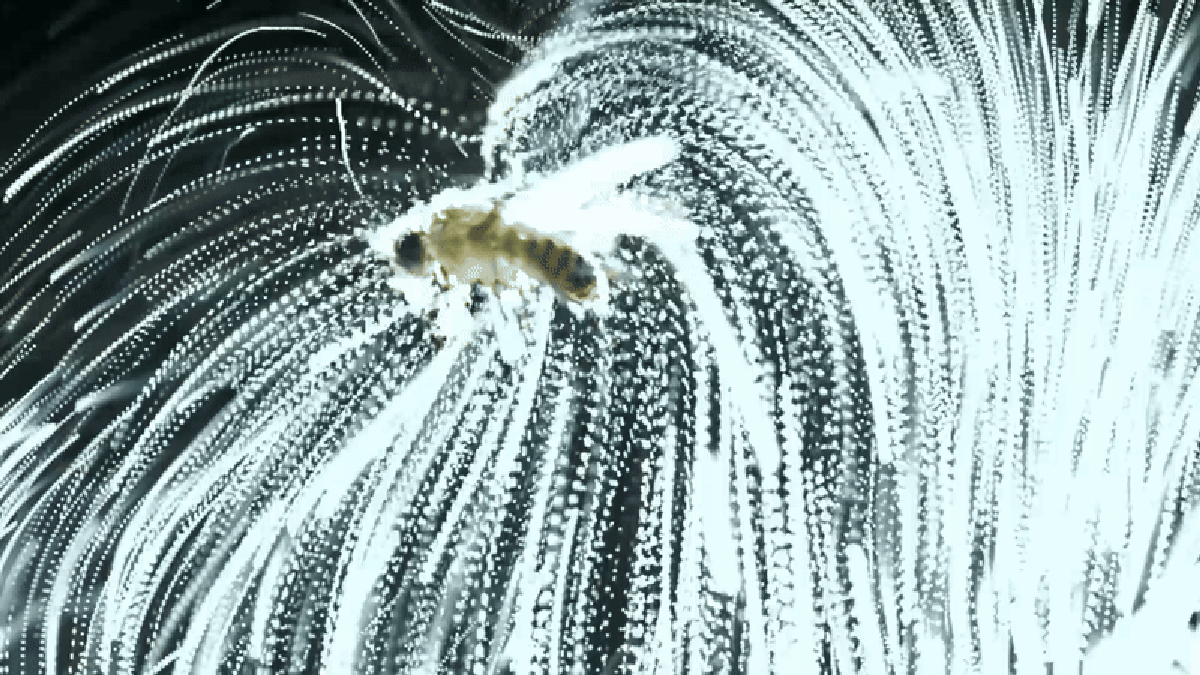Parasitic nematodes, tiny worms barely visible to the naked eye, face a remarkable challenge in their quest to reproduce: they must leap a distance up to 25 times their own body length and successfully land on a flying insect to continue their life cycle. Given the obstacles posed by gravity, wind, and air resistance, the odds seem stacked against these minuscule creatures. However, new research reveals that these nematodes exploit a subtle but powerful force—static electricity—to dramatically improve their chances of success. This discovery sheds light not only on the worms’ unique survival strategy but also on the broader and often overlooked role that electrostatic forces play in the lives of small animals.
At the scale of everyday human experience, static electricity is a mild nuisance—perhaps a small shock when touching a doorknob after walking across a carpet. But in the microscopic world of insects and tiny organisms, static charges can become crucial, life-or-death forces. A recent study published in the Proceedings of the National Academy of Sciences USA demonstrates that the beating wings of insects generate a positive electric charge sufficient to attract oppositely charged parasitic nematodes floating nearby. These electrical forces act like invisible tractor beams, pulling the worms toward their hosts even if their initial jump is only roughly aimed. “They don’t need to be precise when they jump, just close enough to be attracted,” explains Víctor Ortega-Jiménez, a biologist at the University of California, Berkeley, and senior author of the study.
This research adds to an emerging body of work revealing how the physical laws of electricity influence ecological interactions at small scales. Over the past decade, scientists have uncovered a variety of fascinating examples. In 2013, researchers found that bees can detect electrical fields around flowers and use this information to better locate nectar. Around the same time, Ortega-Jiménez himself showed that spiderwebs can deform in response to positively charged insects flying nearby, helping spiders capture their prey. More recently, in 2023, a team led by Sam England discovered that ticks are passively attracted to furry hosts because the animals’ fluffy coats accumulate electrons, creating an electrostatic pull.
England, now a postdoctoral researcher studying sensory ecology at Berlin’s Natural History Museum, sees the new nematode study as an important extension of these findings. While ticks wait passively for hosts to come near, nematodes actively propel themselves through the air, using their jumps to enter the range of electrostatic attraction. “They actively input force into the attraction,” he notes, “becoming agents of their own grisly destiny.” England also praises the interdisciplinary approach of Ortega-Jiménez’s team, who combined experimental biology with fluid mechanics and physics to account not only for electrostatic forces but also air resistance and other factors affecting the worms’ flight paths. This integration helps connect discoveries in “electrostatic ecology” with a broader understanding of ecological physics.
To test how static electricity influences nematode success, Ortega-Jiménez designed a clever experiment. He tethered live fruit flies to a copper wire and manipulated the voltage around them to simulate the range of electric potentials insects naturally generate during flight—between 100 and 700 volts. Because the flies were stationary, they did not generate their own charge through wing movement, so the setup allowed precise control over the electric environment. The nematodes were then released and encouraged to jump toward the electrified flies. The results were striking: as the electric potential of the fly increased, the likelihood that nematodes would successfully attach rose dramatically. With no charge, the worms nearly always missed their target; at higher voltages, more than half managed to latch on.
Since coaxing nematodes to jump in controlled experiments is time-consuming and challenging, Ortega-Jiménez collaborated with Ranjiangshang Ran, a postdoctoral researcher in fluid mechanics at Emory University. Ran developed computer simulations to model thousands of nematode jump trajectories under varying conditions of wind and electric charge. The simulations confirmed the experimental findings and went further: when the simulated electric potential reached 800 volts and a gentle breeze kept the worms aloft, their success rate climbed above 70 percent, even for jumps that initially went in the wrong direction. These results highlight how electrostatic forces can compensate for imprecise jumping, effectively acting as a safety net that draws the worms to their hosts.
For nematodes, this reliance on electrostatic attraction is not a trivial detail but

